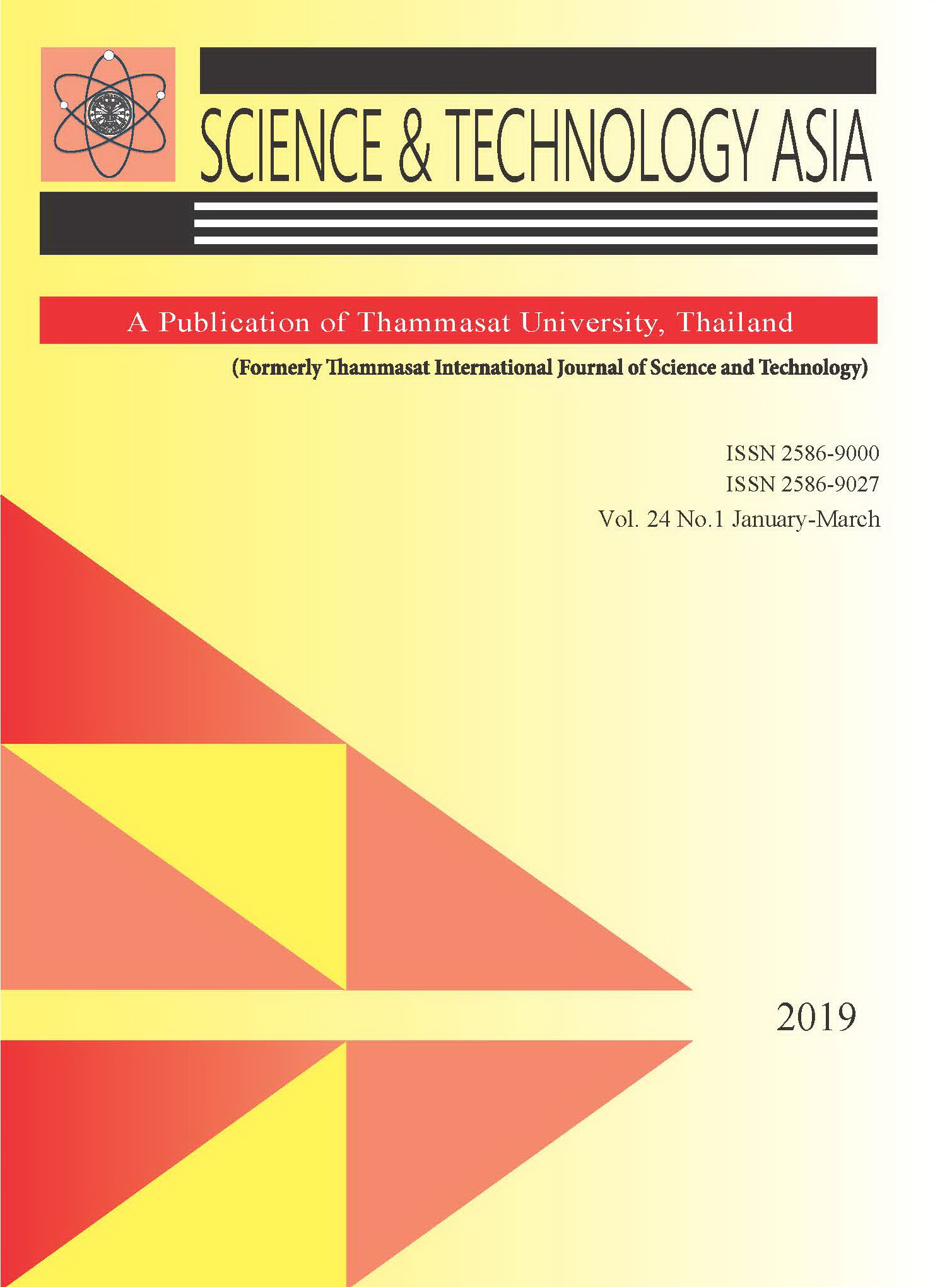Energy and Exergy Analysis of Low-Cooling in Building by using Light-Vent Pipe
Main Article Content
Abstract
This study conducts the energy and exergy analysis of a light-vent pipe which is integrated into attic space. The roof is a shed roof with 30 degrees of inclination angle. The LVP is manufactured from an aluminum sheet with a translucent flat cover and is 0.15 m in diameter. The results show that the test house integrated with the LVP could well transfer heat accumulated in attic space by natural ventilation through the LVP. The natural daylight has an influent to the air mass flow rate corresponding to energy and exergy efficiency. The total energy and exergy efficiencies were 37-67% and 12.3-33%, respectively. In addition, the ceiling heat gain and exergy heat gain performed that, the requirement of space cooling of the house with LVP lower than that the reference house.

